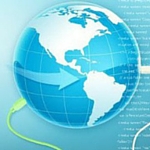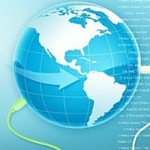
If you are a typical stakeholder of a small or medium size business, you probably prefer to invest in assets that contribute directly to the growth and revenue of your business (for example, tools for making your product, machines to expand capacity, people to design and sell your product, etc.). You know that information technology and business software is important, but you avoid spending capital in this area, as long as you can manage by using spreadsheets and other office software, and at most utilize the popular QuickBooks to manage your accounting, invoicing, and do very basic inventory management.
You may have heard of Enterprise Resource Planning (ERP) software that large companies use to run their businesses, but you think that you cannot afford this software anyway, and you are not sure what would be the real benefits of such an investment. This article is going to dispel some of these myths – ERP software has a real value for your business and it does not have to be expansive at all!
First, I would like to quickly define what ERP software does and how it works. ERP software has been around for at least 20 years and it was developed from a previous class of software called MRP (Material Requirement Planning) that existed at least 20 years before the emergence of ERP. ERP software was developed to manage most of the business related processes of a typical enterprise. ERP can be customized to fit many industries including general manufacturing, retail, CPG, Life Sciences, Process, distribution, and service industries.
The main benefit of ERP software is that it integrates the flow of information between various business processes and integrates business transactions with company’s financial system in real time. ERP enables improved business decisions by making information from various parts of the business available to throughout your business operations in real-time. It posts relevant business transactions to company’s general ledger and other financial systems allowing management to see financial implications in real time. ERP typically covers all processes starting from sales order entry, shipping/delivery, product pricing, warehousing and inventory, procurement, production, invoicing (both A/P and A/R), service, financials, and many others.
For example, when entering a sales order, customer service person (or your web based client) can see the available inventory for this sales order in the various warehouse locations. If no inventory is available at the time of the order, ERP system can allocate planned production or planned purchases, or estimate when a make-to-order could be completed by your manufacturing operations. ERP can also apply the proper pricing for the applicable customer, sales tax, and shipping charges, and determine promised delivery date. Once the order is entered, the system reserves the inventory to fulfill this order. The system then automatically plans the required production orders to replenish the sold inventory and related external purchases of raw material (or finished goods depending on whether you make the product in-house or buy it from supplier). Please note that this is just one example of a typical ERP process – ERP transactions can be adapted to a large variety of industry and process requirements.
ERP contains critical master data for customers, vendors, products (some system refer to items or materials), bill of materials (BOMs), manufacturing work processes and routings, assets, and many other master records. Maintaining these master records would help your company to improve consistency and work from the same set of data.
Many small companies may be able to get by using office tools such as spreadsheets and simple accounting software (e.g., QuickBooks or Peachtree), while most of the work is done by company owners and the number of employees is small (although, some SMBs have complex business processes that require ERP almost from the start). However, as your revenue and employee grow, the lack of proper integrated business software will start impact your business results in real ways that impact your bottom line such as lost orders, poor planning, inventory shortages, missed shipments, missed invoicing, and general lack of control.
ERP software have many real business benefits including –
- Improved overall management visibility to business operations
- Improved visibility to company’s financial performance in real-time
- Improved sales performance
- Improved inventory control and planning
- Consistent business policies and processes throughout your company improving customer service and profitability
- Improved on-time delivery
- Reduced procurement cost
- Reduced work-in-process inventory
- Reduced labor costs (for both office operations and manufacturing)
- Reduced overall waste
….and many more. ERP benefits should be identified and documented for your specific business.
The availability of user-friendly QuickBooks software provided a good stop-gap solution for many small businesses, but with all the advancement of QuickBooks functionality, it is still far from being integrated ERP software with proper controls, auditing, and scalability required to support end-to-end business operations. Features that make QuickBooks user friendly (such as ability to reverse transactions), make it a terrible software for controlling a growing business with growing number of employees. SMBs should consider upgrading QuickBooks to ERP as soon as they grow beyond five to ten employees and over $5 million in annual revenue (this is just a general rule of thumb). Many companies should consider implementing ERP light software from the start to avoid migration and re-training efforts.
SMBs have as complex business processes and need as large corporations. Large corporations invested millions in implementing state-of-the-art ERP software packages, but can SMBs afford ERP? It is clear that there are many business benefits to justify investment in this critical software, but as stated in the beginning of this article, SMBs are sensitive to cash outlays. The good news is that the emergence of Open Source ERP software substantially reduced the cost of ERP.
Open Source software existed for many years. Many have heard of the Open Source Linux operating system. Open Source software is developed by a community of developers that have no commercial interest in the software they develop. Therefore, in its pure form, Open Source software is free! In the case of Open Source ERP, however, it is not entirely free; because Open Source ERP ISVs (independent software vendors) typically have a basic free version and then offer a more capable version that contains close source code or charge required support and maintenance fees. However, the cost of Open Source ERP software license is still about 10 times lower than the cost of traditional close source ERP software. In recent years, Open Source ERP considerably advanced from a functional perspective becoming a viable alternative to traditional ERP software.
Leveraging Open Source ERP software, small and medium size businesses (SMBs) can now afford to implement enterprise class software that was available up until recently only to large corporations. They can scale and grow beyond QuickBooks and Peachtree at a very low investment cost, or implement from the start scalable ERP light solution. Since ERP is such an important enabler of business success, SMBs cannot afford to overlook this opportunity.
The Farber Consulting Group, EAS Practice focuses on helping SMBs in the New York, New Jersey and Pennsylvania areas select and implement affordable open source CRM and ERP solutions.
